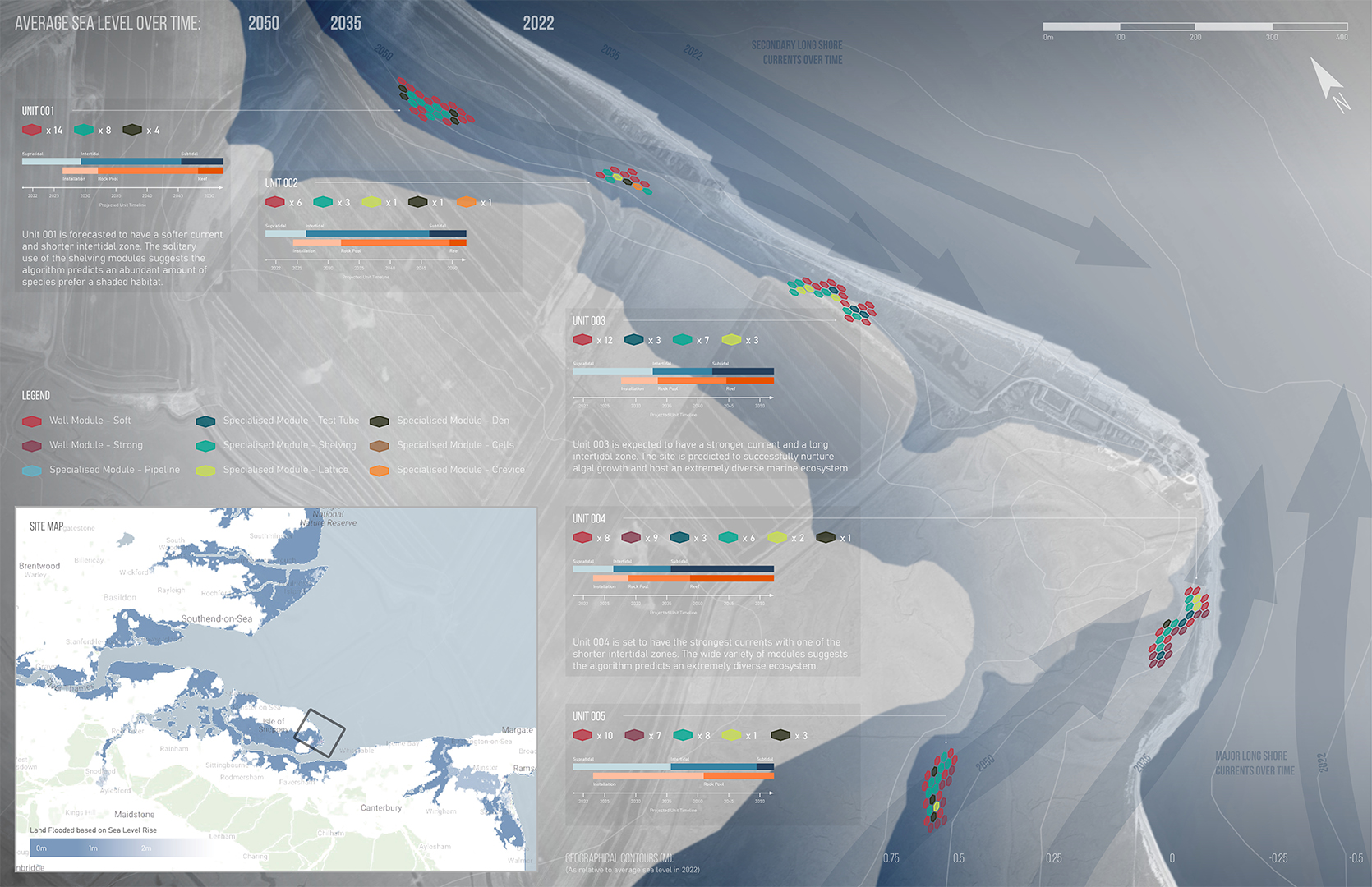
CHROME
Planet Centric Design / Sustainability / Climate ChangeLocation: United Kingdom Coastlines
Status: Concept • 2022
Team: Nishtha Aggarwal, Caroline Lauvetz, Jiayi Liu, Fiona Tai
Sponsors: Logitech, Royal College of Art
Role: Design Lead
CHROME (Conditional Habitat Restoration of Marine Ecosystems) is a system that proposes current interventions based on the forecasting of factors including rising sea levels, for the future proofing of coastal biodiversity through habitat creation.
Marine habitats and biodiversity are declining faster than at any other time in human history. These environments contain some of the most diverse ecosystems on the planet, yet they are subject to multiple stressors such as overexploitation of species and ocean warming. As global temperatures continue to warm, sea level will continue to rise causing a 'coastal squeeze' that would reduce the habitat of coastal marine life. The approach is to design for these inevitable changes to come.
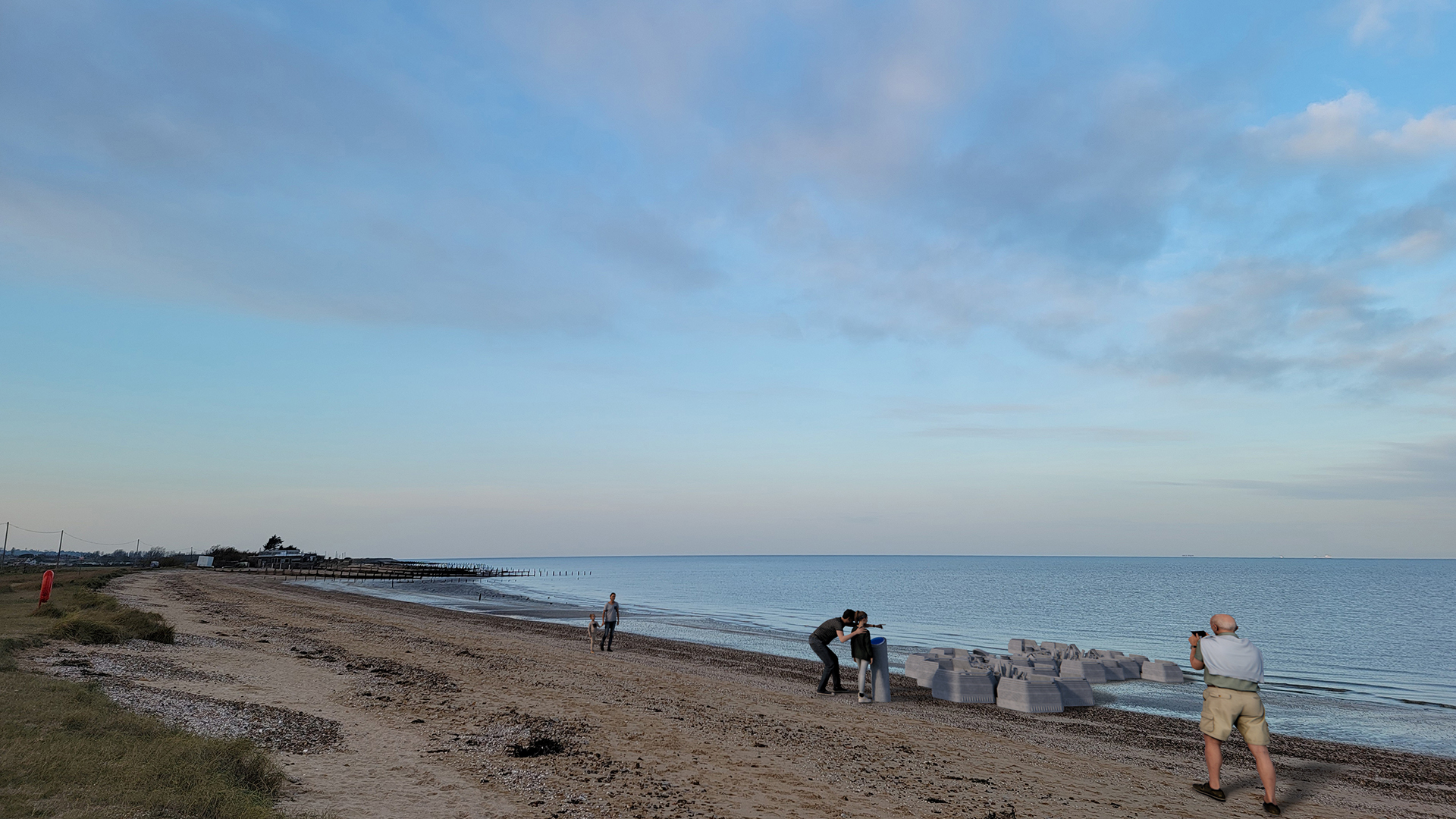
1.0 // System Overview
The inputs acquired for CHROME are physical and ecological parameters that would account for several factors such as UK topography, geological composition and areas prone to flooding due to rising sea levels. These parameters help predict changes in the coastline overtime. Further information including the strength of ocean currents, length of intertidal zones and physicochemical ranges would provide the insight required to introduce interventions in prospective intertidal and subtidal zones.
The variety of data gathered will allow for informed decisions regarding demographic distribution and control of individual species, as well as more holistically, the control of ecosystemic dynamics. An algorithm would further generate the configuration and composition of each unit, created from a range of functionally unique modules, specific to each site. It would also define the timeframe of these interventions in terms of deployment and ecosystemic evolution.
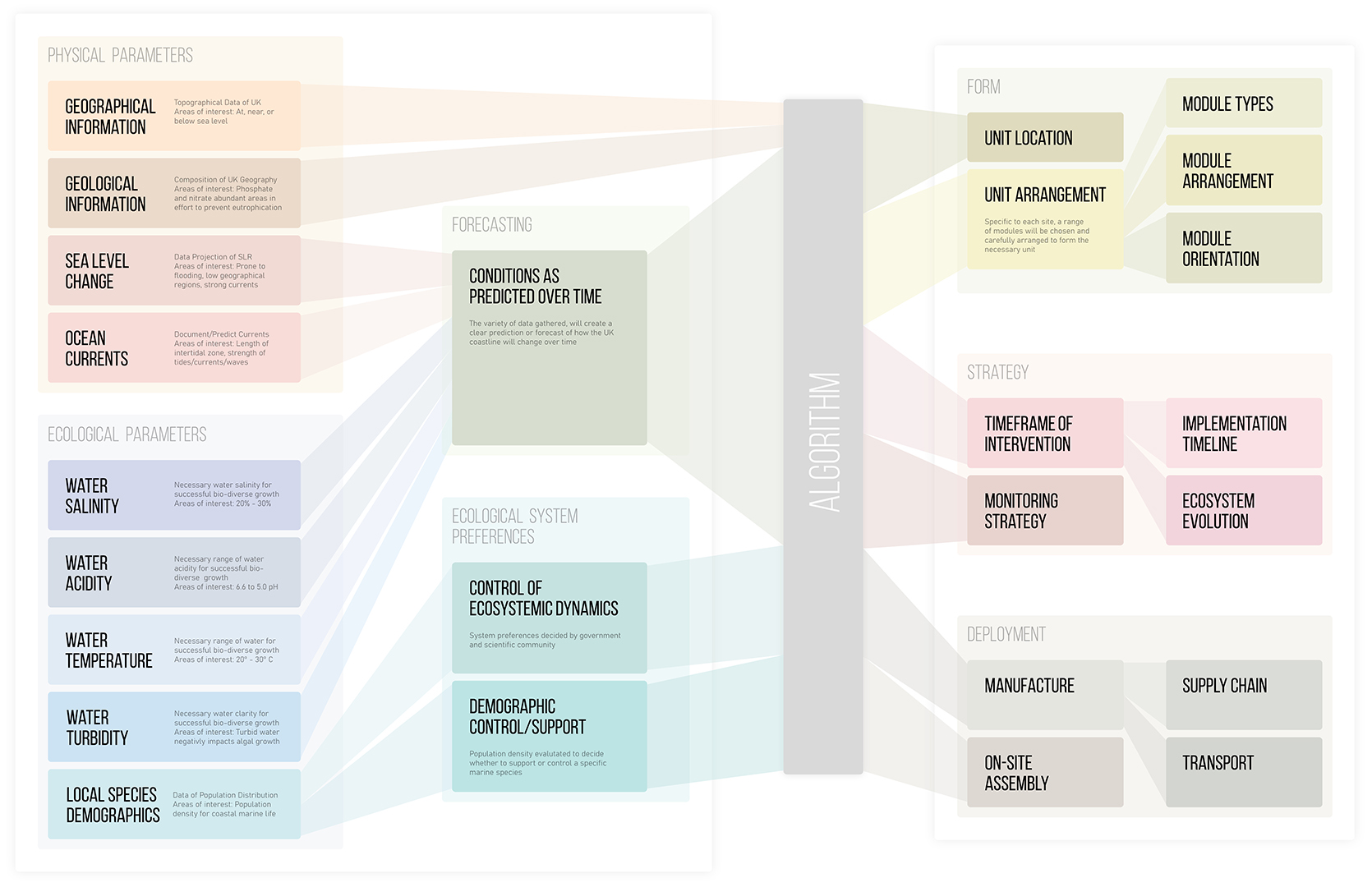
2.0 // Unit Design
Once deployed and while above sea level, the units serve as a cautionary tale of the eventual impending effects climate change has on the UK’s coastline. Over time, once the sea level has risen so the units are in the intertidal zone, they serve as a rock-pool providing habitats for intertidal & sub-tidal species. Finally, upon entering the sub-tidal zone, the units become home to fully sub-tidal species and bases for future reef life.

Shown here in particular is Unit 004 from a case study site in Shellness. It resides at the Eastern tip of the island and will be one of the first in its cluster to achieve intertidal status. Given a confluence of two long shore currents at this point, Unit 004 utilises a combination of Soft and Strong wall modules to safe guard the stability of the ecosystem it inhabits at an intertidal stage. Furthermore, Unit 004 will become subtidal within a period of approximately 20 years and as such also comprises Crevice and Lattice modules, in anticipation of reef formation.
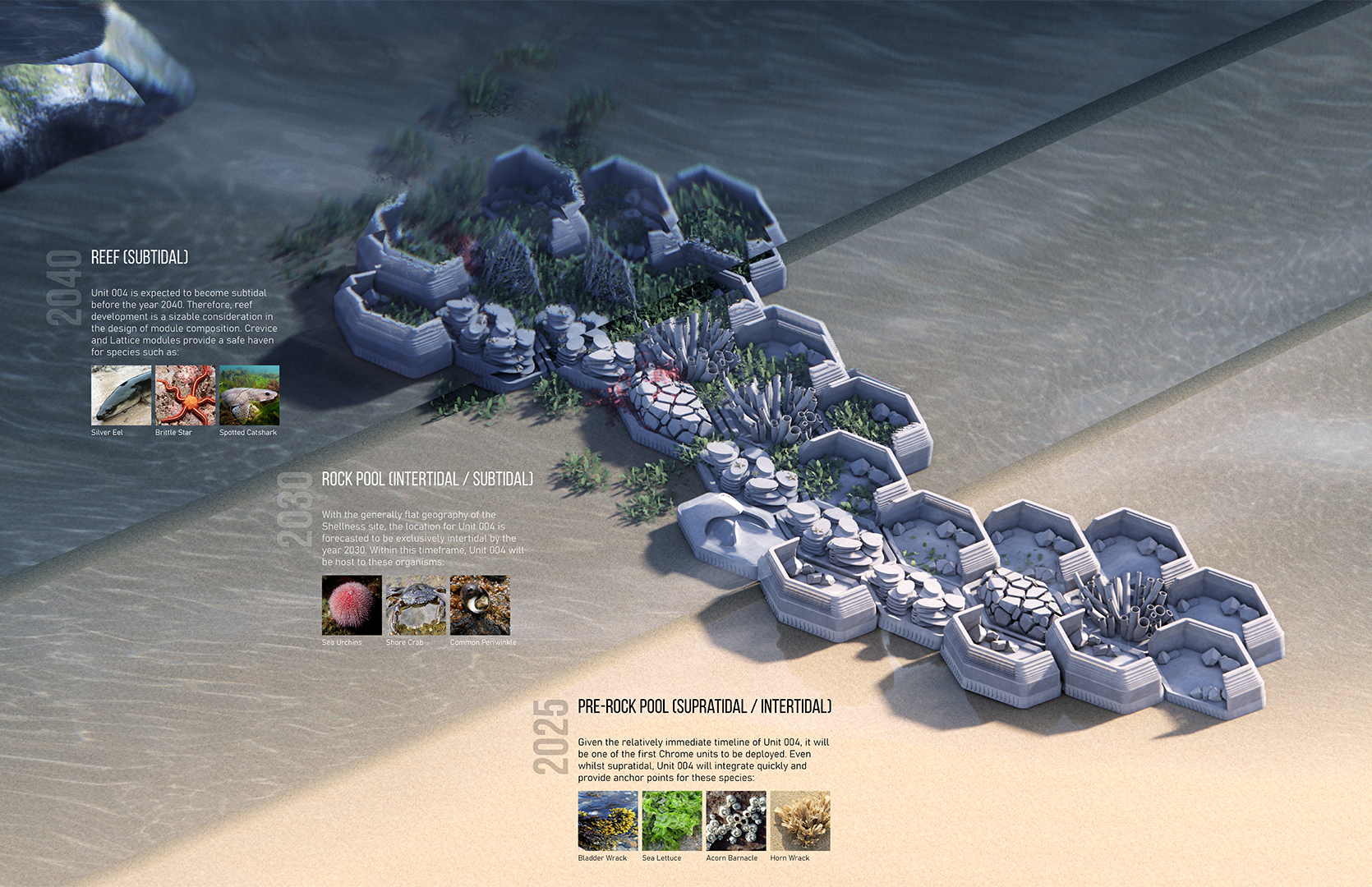
3.0 // Module Design
To create each unit, CHROME selects from a variety of Specialised Modules and Wall Modules. Each module is designed for the preferences and proliferation of specific species, and respectively feature a unique variety of spatial and material qualities. The modules are constructed from low carbon concrete that utilizes an aggregate mix suitable for bio-diverse marine life. Once the modules are manufactured, they are shipped to their prospective sites and assembled on site to the algorithm’s specifications.
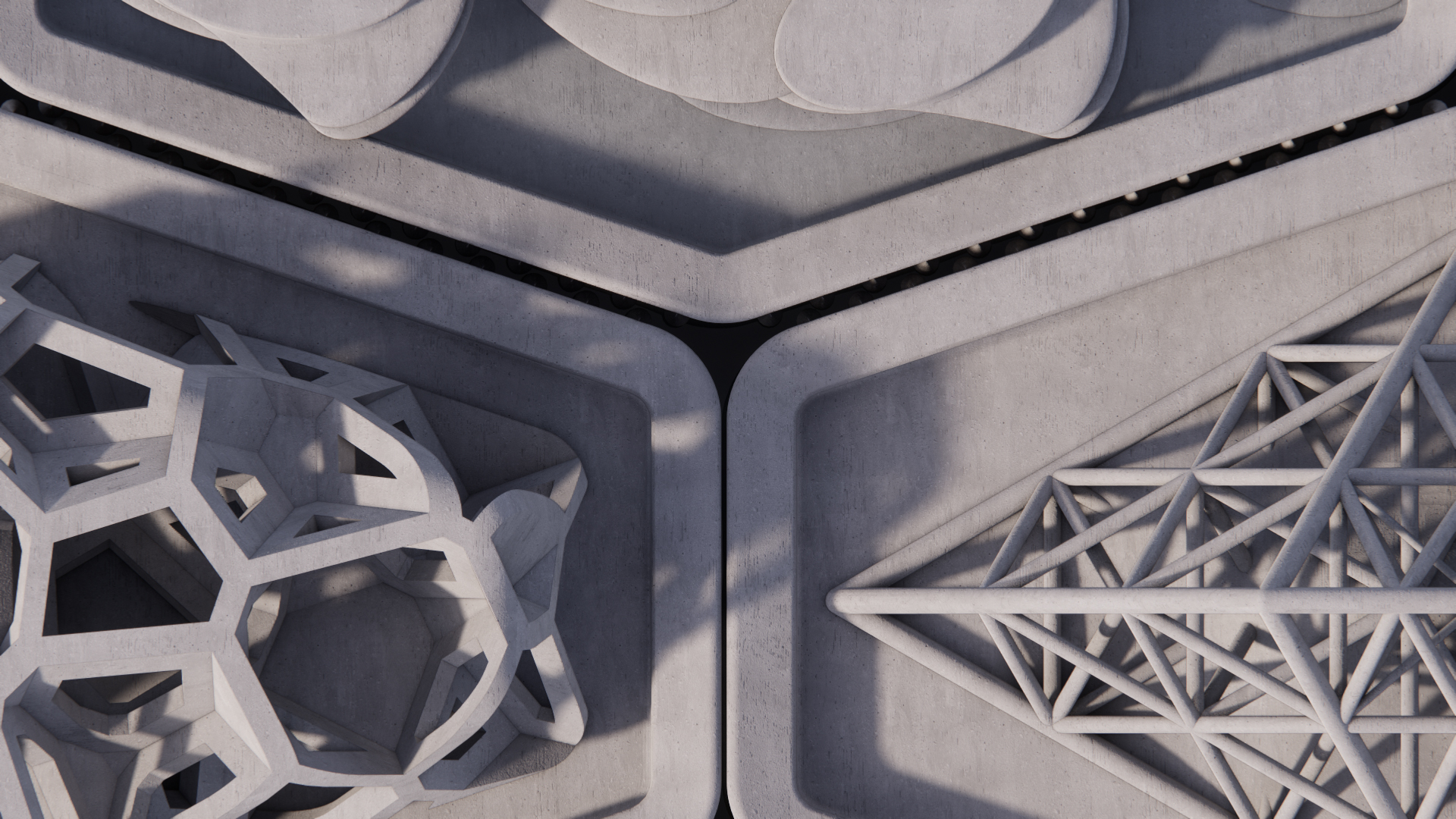


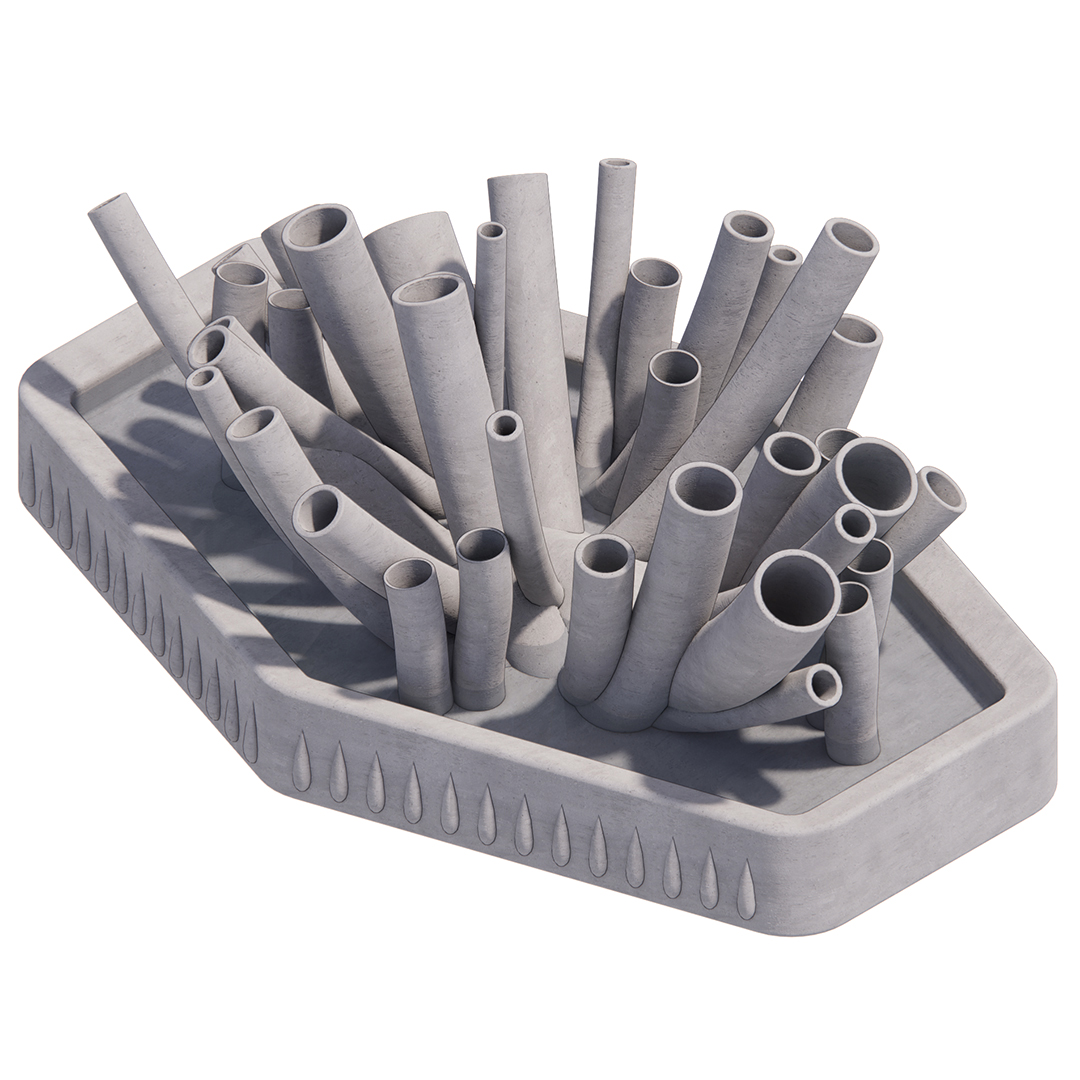

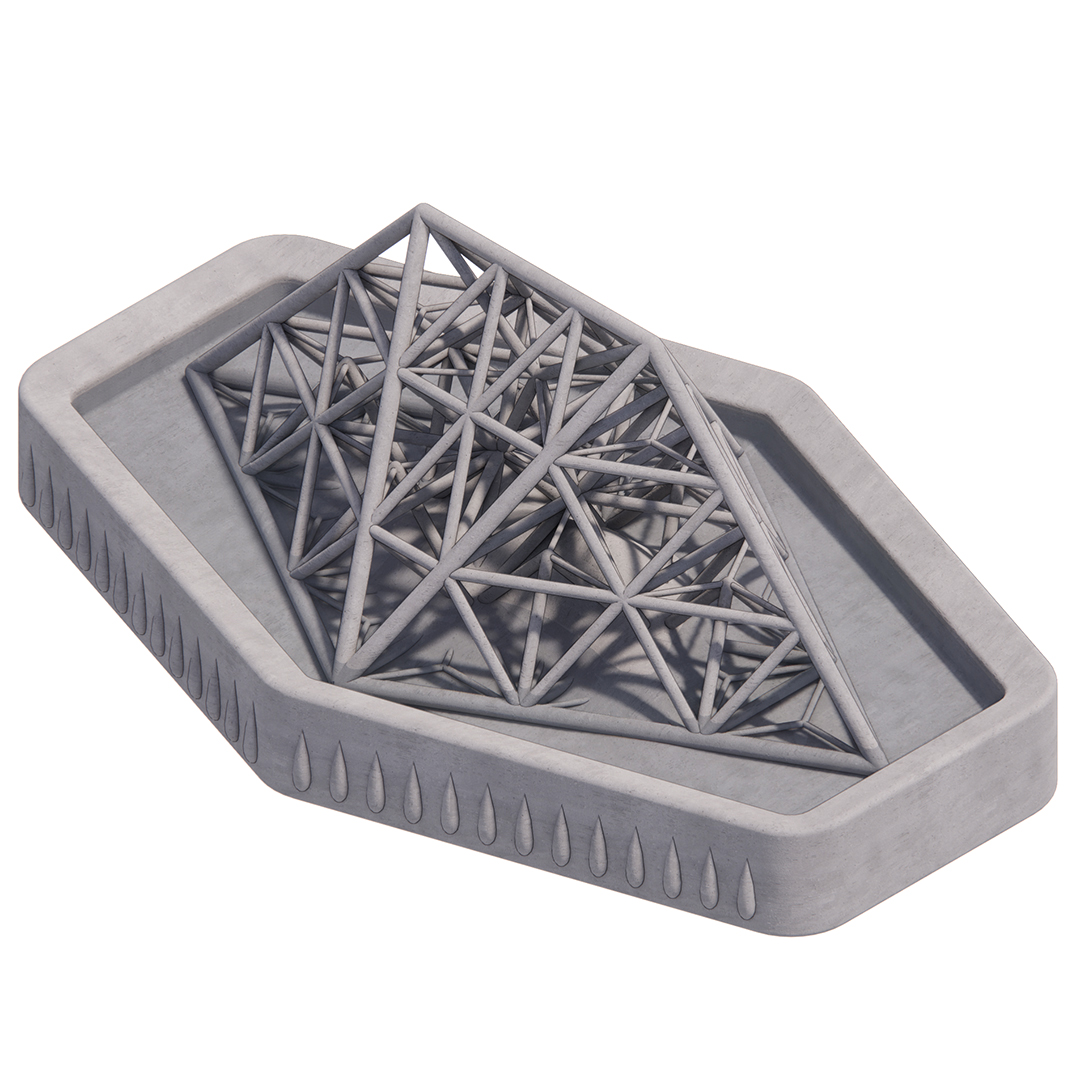
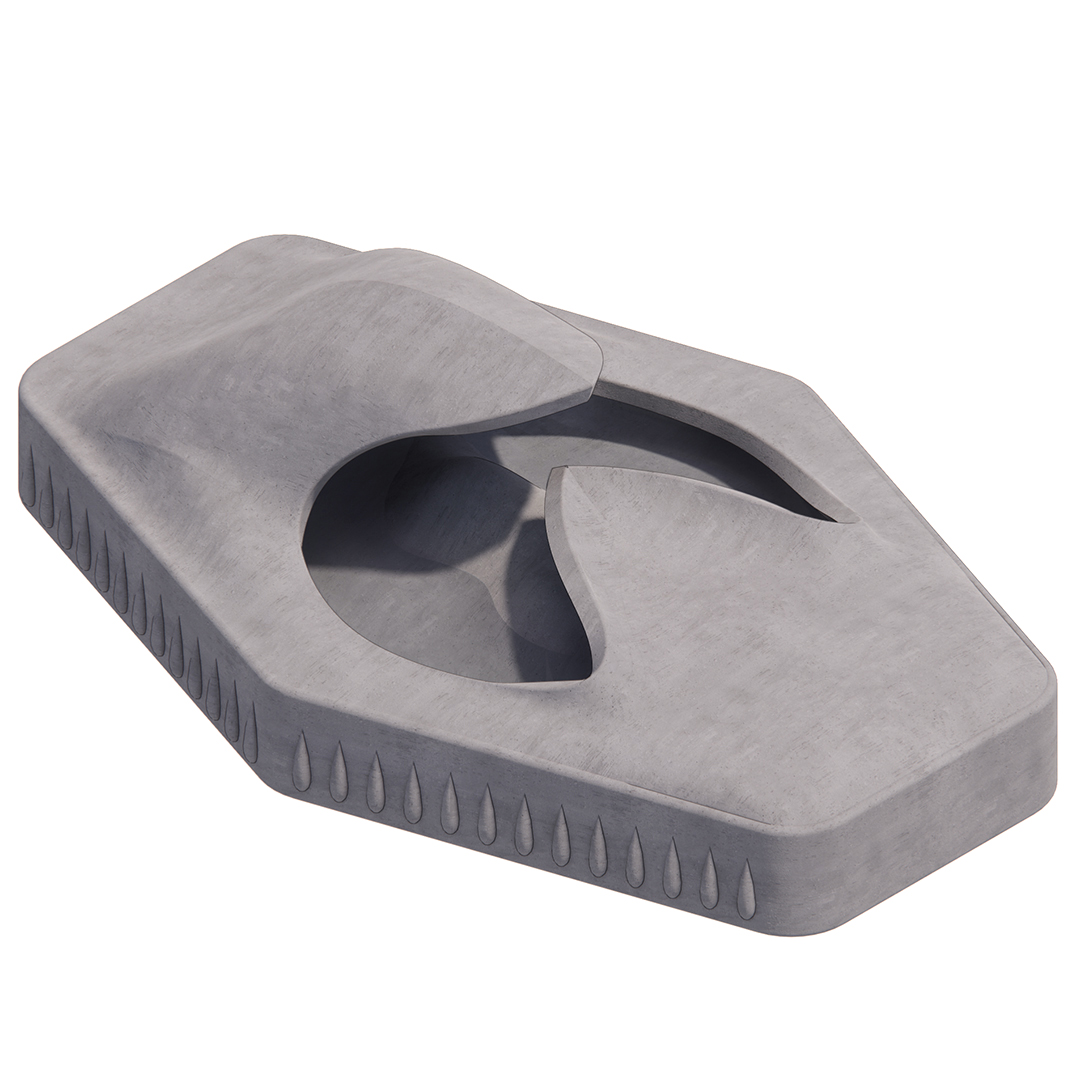


4.0 // Case Study: Shellness
Located on the Isle of Sheppey, Shellness Beach offers a suitably varied site as a case study. Likely to be completely submerged in a little over 30 years’ time due to rising sea levels, Shellness lies in the brackish waters at the mouth of the River Thames. Today, it supports its own diverse coastal ecosystems, unequivocally under the aforementioned pressures of sea level rise. Together with a varied and fast-changing geography, Shellness provides a good showcase of how the generated designs account for different parameters.
